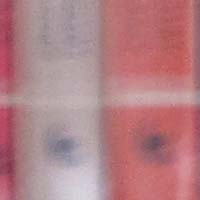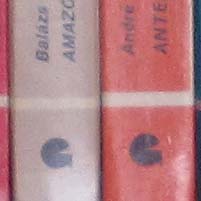Canon Digital IXUS 870 IS Review
(also known as the PowerShot SD880 IS Digital ELPH)
Review Date: November 27th 2008
Author: Zoltan Arva-Toth
Leave a comment about this review
|
Image Quality
All of the sample images in this Review were taken using the 10M Superfine mode, which gives an average image size of around 4-6Mb.
The�Canon Digital IXUS 870 IS produced good-quality photos for an ultra-compact digital camera that has a small sensor with lots of pixels jammed into it. My biggest gripe was the early and harsh highlight clipping that raised its ugly head whenever shooting in contrasty, uncontrolled lighting. Often, it would have taken so much negative exposure compensation to protect these highlights that the rest of the photo would have looked seriously underexposed, even with i-Contrast turned on. Otherwise, the photos had good quality, at least at lower sensitivity settings. Colours were nice without being oversaturated. Chromatic aberrations were not frequently seen, and when you could spot them, they were usually restricted to the areas close to the edges of the frame. Sharpness was excellent throughout most of the frame, with only the extreme corners suffering from some lens blur. The image stabiliser was of great help when taking hand-held shots at slower shutter speeds.
Noise
The Canon Digital IXUS 870 IS has six selectable sensitivity settings ranging from ISO 80 to ISO 1600. ISO 3200 is available as a separate Scene Mode, at a reduced resolution of 2 megapixels. At base ISO 80, the photos taken by the camera at full resolution lend themselves well to printing, even at large print sizes. ISO 100 and 200 are only slightly noisier, and even ISO 400 may be good enough for a mid-sized print. Quality drops at ISO 800, but is still okay for smaller prints, if you can live with the slightly reduced saturation. ISO 1600 is worse still, and I would give ISO 3200 a pass unless shooting for the Web � it's not noisy, but the heavy noise reduction makes the photo too blurry for a usable print, even at the smallest sizes. Here are some 100% crops which show the noise levels for each ISO setting.
ISO 80 (100% Crop) |
ISO 100 (100% Crop) |
 |
 |
ISO 200 (100% Crop) |
ISO 400 (100% Crop) |
 |
 |
ISO 800 (100% Crop) |
ISO 1600 (100% Crop) |
 |
 |
ISO 3200 (100% Crop) |
|
 |
Sharpening
The Canon Digital IXUS 870 IS offers 5 levels of sharpening, inexplicably tucked away under the Custom option of My Colours. The default value is 0, with -2 being the weakest and +2 the strongest setting. Alternatively, you can apply some further sharpening in a program like Adobe Photoshop. Here are some 100% crops of images taken at the default value of 0, which have been Saved as Web - Quality 50 in Photoshop. The right-hand image has had some sharpening applied in Photoshop.
Original
(100% Crop) |
Sharpened (100% Crop) |
 |
 |
 |
 |
File Quality
The Canon Digital IXUS 870 IS does not shoot RAW. The available JPEG settings are Normal, Fine and Superfine. Here are some 100% crops which show the quality of the various options, with the file size shown in brackets.
10M
Superfine (5.13Mb) (100% Crop) |
10M
Fine (3.35Mb) (100% Crop) |
 |
 |
10M
Normal (1.65Mb) (100% Crop) |
|
 |
|
Chromatic Aberrations
The zoom lens of the Canon Digital IXUS 870 IS and the Digic processor generally dealt well with chromatic aberrations during the review. The crops below, taken from the edge areas of two photographs, show what you can expect in the worst case.
Example
1 (100% Crop) |
Example
2 (100% Crop) |
 |
 |
Macro
Maximum magnification and the closest focusing distance is achieved at the wide end of the Canon Digital IXUS 870 IS's zoom. The smallest area that you can fill the frame with is about 36x27mm (you would need a 1:1 macro lens for this on a 35mm film camera). Barrel distortion is quite pronounced at this setting, but it is no worse than with most other compacts that achieve maximum magnification at wide angle. The first image shows how close you can get to the subject (in this case a compact flash card). The second image is a 100% crop.
Macro Shot |
Macro Shot (100% Crop) |
 |
 |
Flash
The Canon Digital IXUS 870 IS's slimline built-in flash is not particularly powerful, but can be used as a life-saver or as a fill light. The available settings are Forced On, Forced Off and Auto. The shots below were taken of a white ceiling at a distance of 1.5m, and they show how much extra vignetting the flash may cause, particularly at wide angle, where its coverage is not enough to evenly illuminate the scene. Using one or more optical slaves should help.
Flash Off - Wide Angle (28mm) |
Auto Flash - Wide Angle (28mm) |
 |
 |
Flash Off - Telephoto (140mm) |
Auto Flash - Telephoto (140mm) |
 |
 |
And here are a couple of portrait shots, taken with and�without red-eye reduction and red-eye lamp. As you can see, enabling these features helps a lot. Further improvement could be achieved by using the post-capture red-eye reduction function in Playback.
Flash On |
Flash On (100% Crop) |
 |
 |
Flash - Red-eye Flash |
Flash - Red-eye Flash (100% Crop) |
 |
 |
Night Shot
The Canon Digital IXUS 870 IS can be set to a maximum of 15 seconds in the Long Shutter mode, which is very good news if you are seriously interested in night photography. To enter this mode, hit the FUNC/SET button and, while exposure compensation is highlighted, press DISP once. The camera takes the same amount of time again to apply noise reduction, so for example at the 15 second setting, the actual exposure takes 30 seconds. The shot below was taken using a shutter speed of 1/3 second, aperture of� f/2.8 at ISO 80. I've included a 100% crop of the image to show what the quality is like.
Night Shot |
Night Shot (100% Crop) |
 |
 |
Anti Shake
The Canon Digital IXUS 870 IS has a lens-based optical image stabilisation system, which allows you to take hand-held photos at shutter speeds that are critically slow for the focal length used. The crops below are from two photographs, both taken at 1/10 second at the 112mm equivalent zoom setting. As you can see, the image stabiliser does make a difference at shutter speeds like this. Importantly though, it won't help when even longer exposure times are required � in those cases, switch off IS and use a sturdy mount such as a tripod.
| Shutter Speed / Focal Length | Anti Shake Off (100% Crop) |
Anti Shake On (100% Crop) |
| 1/10th sec / 112mm |  |
 |
|
![]() PhotographyBLOG
is a member of the DIWA
organisation. Our test results for the Canon Digital IXUS 870 IS have been submitted to DIWA
for comparison with test results for different samples of
the same camera model supplied by other DIWA
member sites.
PhotographyBLOG
is a member of the DIWA
organisation. Our test results for the Canon Digital IXUS 870 IS have been submitted to DIWA
for comparison with test results for different samples of
the same camera model supplied by other DIWA
member sites.
